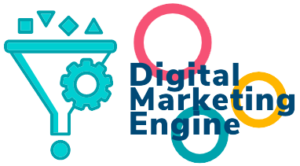
Why the sales funnel’s days as a marketing model are numbered
As a representation of the customer journey, the sales funnel is well past its sell-by date. Potential replacements include the messy middle, the bow tie and the flywheel
Dinosaur reconstruction can be a tricky game. If they weren’t lucky enough to find the fossilised skeleton of an unknown species intact, the early palaeontologists had to work out which bone should go where from the pile they’d assembled. Edward Cope’s first attempt to piece together the anatomy of the leviathan elasmosaurus in 1868 placed its head on its tail – he simply couldn’t believe that any creature would have such a long neck. Cope’s great rival, Othniel Marsh, revelled in his error, stirring up a feud that became known as the bone wars.
Marketing is in a similar, albeit less fraught, place today. The sales funnel, a model of the customer journey that’s been core to the profession for decades, is under attack from all sides for being the wrong shape. The most appropriate replacement for this outmoded concept? Take your pick from the following: the messy middle, the content ecosystem, the bow tie or the marketing flywheel.
So what is going on? At first glance, the funnel seems logical enough. It tracks consumers along a route summarised by the acronym Aida (awareness, interest, desire and action). At each of these points, a proportion of potential buyers will walk away – hence the narrowing shape that gives it its name.
“The sales funnel was invented for simpler times – more than 100 years ago,” says Shiona McDougall, global chief strategy officer at creative agency RAPP. “It doesn’t account for the sophistication of today’s digitally savvy and marketing-resistant consumers. Nor does it account for the proliferation of sales channels and the complexity of modern marketing.”
Take social media, for instance. A brand may catch the eye of an anonymous browser on TikTok or Instagram. Once in a while, that person may nip over to the brand’s website and make a purchase. From the seller’s perspective, such a transaction seems like a leap out of the dark straight to the end of the funnel.
Then there are repeat customers, who are missing from the model.
“Sometimes the biggest wins aren’t represented by the traditional sales funnel,” McDougall says. “Turning a customer into a repeat customer and/or advocate can often have more impact than piling more prospects into the top of the funnel, given that more than 90% of these will never make a purchase.”
She argues that any sales team that’s focused on feeding the funnel from the top could be ignoring the rich potential of consumers who have gone through it before.
“Your existing customers have the potential to be a selling army. If you lead them correctly, they’re capable of driving new customer purchases beyond your wildest dreams,” McDougall stresses. “Look at Monzo, Uber and Apple, for instance.”
The real path to purchases
The funnel’s linearity has also been criticised for being too simple. After all, a customer may show interest in a product, forget it, come back with the intention of buying yet fail to complete the purchase for whatever reason, but then return again later. There’s nothing much linear about that.
In July 2020, Google UK published a research paper on how buying choices are made. Introducing the report, two of its authors, Alistair Rennie and Jonny Protheroe, wrote: “The way people make decisions is messy – and it’s only getting messier. We know that what happens is not linear. There is a complicated web of touchpoints that differs from person to person.”
The term they have coined to describe this morass of chaotic cogitation is the messy middle. This model offers a couple of new dynamics.
Rennie and Protheroe wrote: “People look for information about a category’s products and brands and then weigh all the options. This equates to two different mental modes in the messy middle: exploration, an expansive activity; and evaluation, a reductive activity. Whatever a person is doing, across a huge array of online sources, such as search engines, social media, aggregators and review websites, can be classified into one of these two mental modes.”
Their recommendation to sales and marketing teams is to support consumers as they explore and evaluate. Give them all the information they need to complete their research. Ensure that your online recommendations – on Google Reviews for instance – are strong to boost social proof. Help customers to understand your product with brief, accurate descriptions.
Out of 100 prospects, perhaps between two and five will convert to a sale. What about the other 95 to 98 you’re paid to reach? The answer is usually to retarget them
There’s a clear parallel between the messy middle and another model that’s gaining popularity: the content ecosystem. This is favoured by strategists such as Isobel Burns, founder and director of the Digital Marketing Engine consultancy.
“Unlike the linear sales funnel, the content ecosystem is designed to capture people at various stages of their buying journeys,” she explains. “It can take someone who knows nothing about your offering through a process of education, instilling desire for that offering, reducing scepticism with social proof and allowing them to become more familiar with it at their own pace.”
The content ecosystem is effective at retargeting – that is, marketing to consumers who’ve fallen out of the funnel – according to Burns. She adds that the path to a sale is often far more complex and circuitous than that represented by the funnel. The content ecosystem offers a flexible approach that makes allowances for less predictable consumers.
“Out of 100 prospects, perhaps between two and five will convert to a sale. What about the other 95 to 98 you’re paid to reach? The answer is usually to retarget them,” she says. “Favouring a content ecosystem, rather than a linear sales funnel, enables you to show people content that’s relevant to their buying positions.”
If they want education, provide it, Burns says. If they remain receptive, ensure that there’s an offer ready for them to snap up.
What could replace the sales funnel?
Another replacement model for the sales funnel is the bow tie, which is favoured by WorkForce Software, a US-based specialist in HR applications. Its chief marketing officer, Sandra Moran, explains that the firm uses a software-as-a-service (SaaS) bow-tie model.
In effect, this adds another funnel that covers customers who are committed to a subscription. It tracks these repeat buyers as they stay with the brand, maybe upgrade and expand their purchasing choices. (The two funnels, when facing each other on their sides, vaguely resemble a bow tie.) This is a popular model in software as a service, where to buy is to enter a long-term relationship with a vendor.
Moran can track these customers’ activities at every point, using machine-learning algorithms to provide them with relevant content.
She explains: “As more individuals join ongoing sales cycles, we’re able to identify newly engaged contacts. We can learn with each successful sales cycle which buying signals are indicative of deals that close, providing sales teams with recommended actions to keep those accounts on track.”
The flywheel model, proposed by US software company HubSpot, is a more radical departure from the funnel. The antithesis of the hard sell, it abandons any attempt to shuffle potential buyers along the path to a purchase. Instead, there is a broader focus on helping consumers in whatever they try to do. The flywheel covers three areas of activity: the attract phase, as people learn about a brand; the engage phase, as they buy; and the delight phase, as they are given post-purchase support.
Red Evolution, a marketing agency, is an advocate of the flywheel. The firm’s digital strategist, Alex Bussey, says: “The funnel is a broken and outdated concept. We need a model under which we continually engage and delight people at various stages of the buying journey.”
This means accepting that such a journey won’t be a simple straight line for many potential customers. “Rather than producing content designed to appeal to people at certain stages of the funnel, we tend to create a blend of large pillar pages, which are useful to anyone seeking an overview of a given subject, along with supporting micro-content such as blog posts or an FAQs section.”
So where does this war of models leave the customer? Hopefully, in a world with less of the hard sell. Brands are giving up on the idea of pushing potential punters down a path and are more relaxed about losing prospects. The new thinking is that they’ll be back, even if it’s not clear when.
Life is not a straight line. Marketing is evolving as it tries to track how consumers truly behave. The conventional sales funnel, therefore, is surely facing extinction.
